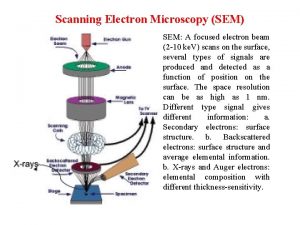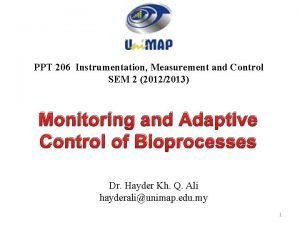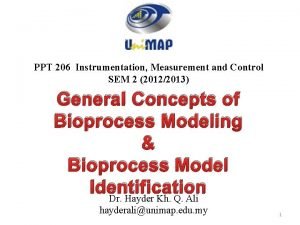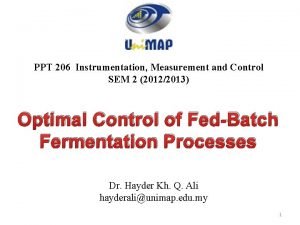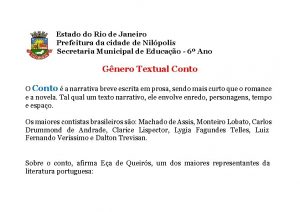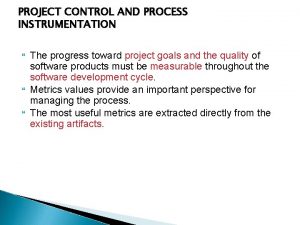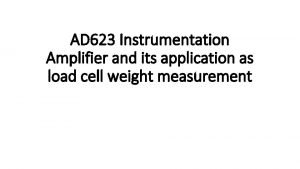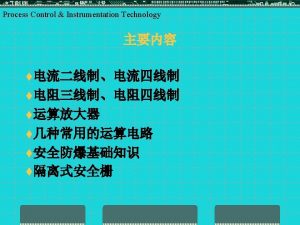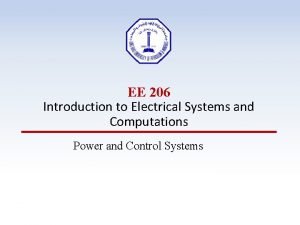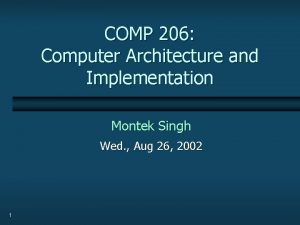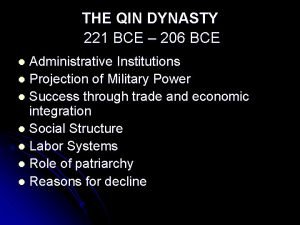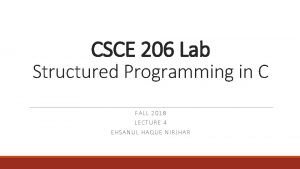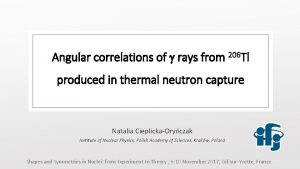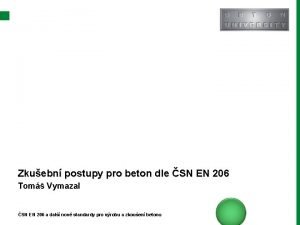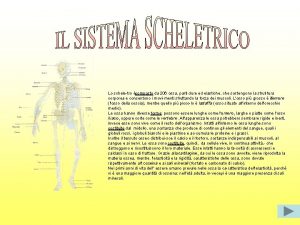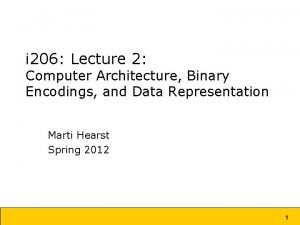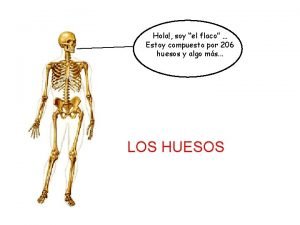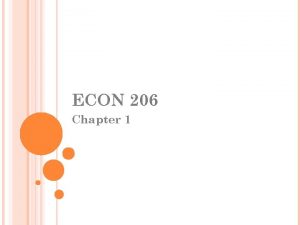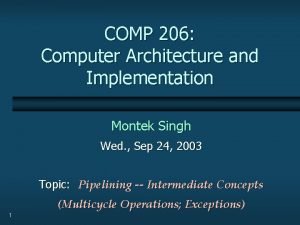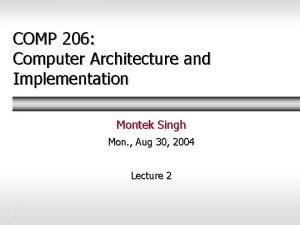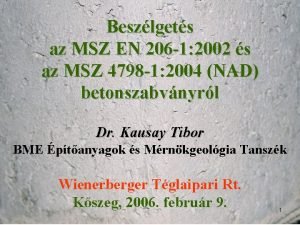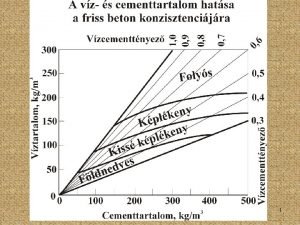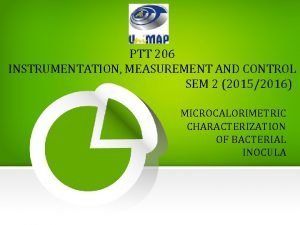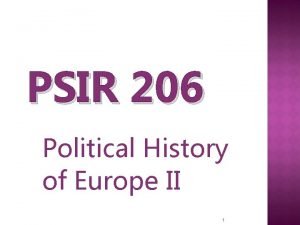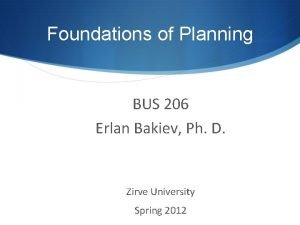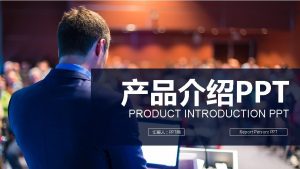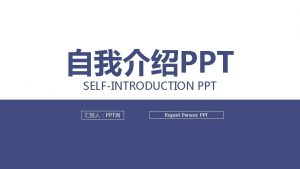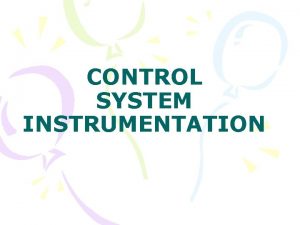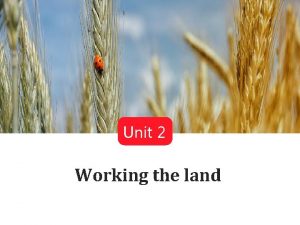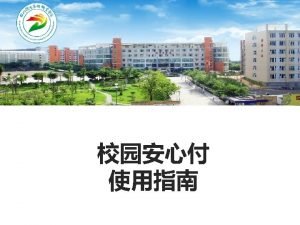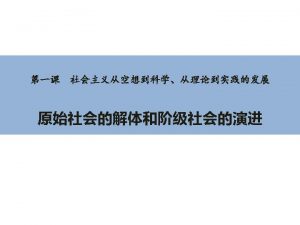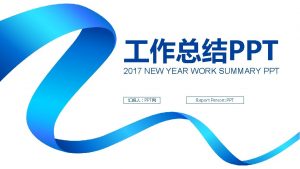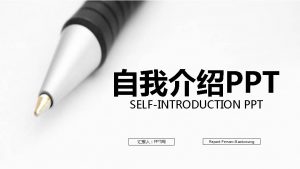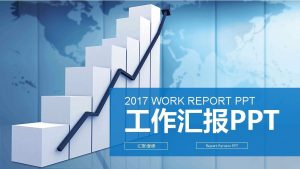PPT 206 Instrumentation Measurement and Control SEM 2





























- Slides: 29

PPT 206 Instrumentation, Measurement and Control SEM 2 (2012/2013) General Concepts of Bioprocess Modeling & Bioprocess Model Identification Dr. Hayder Kh. Q. Ali hayderali@unimap. edu. my 1

1 - Bioprocesses: The bioprocess may be defined as any process that uses complete living cells or their components (e. g. , enzymes, chloroplasts) to effect desired physical or chemical changes. In other words, a bioprocess consists of a cell culture in a bioreactor, which is a process able to create an optimal growth environment. 2

Cells and cell cultures The central object of a bioprocess is the cell. A living cell is a highly complex system which is often defined as the smallest autonomous biological unit. Its main tasks are to maintain itself alive, to reproduce and to manage itself. So, it is able to build its own constituents and to provide its own energy through physical and chemical processes which constitute the cell metabolism. This latter consists of a network of thousands interconnecting reactions, the metabolic pathways, which are catalyzed by enzymes and accurately controlled by regulation processes. 3

The autonomy properties of cells allow to think of growing dissociated cells outside their natural environment. Such cell cultures find many applications in biotechnology industry. Indeed, bacteria, yeast or animal cell cultures allow the synthesis of numerous products of interest for food or pharmaceutical sectors: vaccines, antibiotics, antibodies, wine, beer, industrial alcohols, yeast or enzymes for food technology. Moreover, some intervene in waste treatment and pollution control. 4

However, these applications require the use of a bioreactor. Indeed, such a system favours cell growth by creating a good environment. It monitors and controls the cell environmental conditions like gas flow rates, temperature, p. H, dissolved oxygen level and agitation rate. 5

Bioreactor The most common bioreactor used in industry is the classical stirred tank reactor as the one described in figure 1. The central part of the reactor is the tank containing the growing cells in their culture medium. All the peripheral devices are used to control and monitor the cellular growth and production. 6

Figure 1: Schematic description of a perfectly stirred bioreactor 7

A typical bioreactor involves the following control processes: p. H is supervised through a p. H probe and controlled by addition of acid or base into the reactor, temperature is monitored by a thermocouple and controlled thanks to a heat exchanger, dissolved oxygen is observed by a probe and controlled by agitation rate and/or air flow and /or gas composition. 8

Besides these environmental considerations, culture strategies maybe used to control the nutrient availability. In a batch process, all the culture medium is directly available to the cell and no medium is added or withdrawn during the culture. A fed-batch process is characterized by an addition of culture medium during the culture thanks to a predefined or a controlled flow rate. 9

In a continuous culture mode, fresh culture medium is added while the culture is continuously withdrawn. Finally, an alternative to the continuous culture mode is the perfusion mode where culture medium is added and withdrawn whereas the cells are maintained in the bioreactor. 10

Bioprocess modeling In order to improve process understanding or performance, different automatic tools can be developed: simulators able to reproduce system behaviors, software sensors which allow to obtain an estimation of an unmeasured signal or controllers to maintain optimal conditions. All these tools rely on a representation of the considered system, a mathematical model. 11

Such a model may come in various shapes and be phrased with varying degrees of mathematical formalism. The intended use determines the degree of sophistication that is required to make the model purposeful. 12

Different kinds of bioprocess models are distinguishable according to their possible biological interpretation or their level of complexity. However, before describing the most widespread bioprocess models, let us remind some general characteristics of a dynamic model. 13

General characteristics of models Linear or nonlinear A linear model has to satisfy the superposition principle, i. e. any linear combination of model inputs (and state initial conditions) corresponds to the same linear combination of the states or the outputs. In brief, if the system functions can be represented entirely by linear equations, then the model is known as a linear model. 14

If one or more of these functions are represented with a nonlinear equation, then the model is a nonlinear model. Actually, for more advanced applications (especially bioprocesses), many models are nonlinear. 15

Static or dynamic A static model does not take the element of time into account unlikea dynamic model. Dynamic models are typically represented by mathematical expressions like differential equations in order to describe the dynamic evolution of state variables (like cell growth, substrate consumption or product formation). 16

17

Differential equation/dynamic model Linear equation/linear model 18

Non-linear equation 19

Lumped or distributed parameters The parameters of a model are lumped when the model is homogeneous: the time is the unique independent variable. When some state varies within the system, the time is no more the unique independent variable, the model is heterogeneous and the parameters are distributed. 20

distributed parameter models are typically represented by partial differential equations. In bioprocess, lumped parameters are often preferred because they assume a perfectly stirred bioreactor. 21

Characteristics of bioprocess models The classification presented here was proposed in Tsuchiya et al. (1966). However, it is still often used in the literature (in Mu et al. (2005), for instance). The authors introduce two new characteristics for bioprocess models. First, a model can be structured or unstructured depending on whether it describes intracellular characteristics of the cell (metabolic reactions, cellular processes etc. ) or considers the cell like an entity without internal structure. 22

Characteristics of bioprocess models There are two new characteristics for bioprocess models. First, a model can be structured or unstructured depending on whether it describes intracellular characteristics of the cell (metabolic reactions, cellular processes etc. ) or considers the cell like an entity without internal structure. Second, a model can be segregated or unsegregated depending on whether it considers or not the heterogeneity of the cellular population, the position in the cell cycle for example. The choice among these properties depends on the objective of the model. 23

Such reaction rates vary with time and are usually influenced by many physicochemical and biological environmental factors like substrate, biomass and product concentrations as well as p. H, temperature, dissolved oxygen concentration or various microbial growth inhibitors. 24

25

Parameter estimation The selection of an appropriate model structure is essential for modeling engineering processes. Nevertheless, the model parameters within the structure are fundamental ingredients and therefore not less important. Once the structure is selected, the unknown parameters have to be determined. This is usually done by optimization of a criterion that evaluates the agreement of the model output with some information from experimental studies. 26

Exponential phase 27

Monod model structure 28

Optimization criteria The aim of optimization is the determination of a set of variables (parameters) that leads to the best model. 29
 Sem sem sem
Sem sem sem Fundamentals of instrumentation and measurement ppt
Fundamentals of instrumentation and measurement ppt Instrumentation and control systems ppt
Instrumentation and control systems ppt Basics of instrumentation and control ppt
Basics of instrumentation and control ppt Peixinho sem agua floresta sem mata
Peixinho sem agua floresta sem mata O que motivou felipe a reduzir as suas mentiras
O que motivou felipe a reduzir as suas mentiras Project control and process instrumentation
Project control and process instrumentation Load cell amplifier circuit
Load cell amplifier circuit Process control instrumentation technology
Process control instrumentation technology Prop 206 pto
Prop 206 pto The verb jugar (p. 208) answers
The verb jugar (p. 208) answers Ee 206
Ee 206 Comp 206
Comp 206 221 bce
221 bce Csce 206
Csce 206 Round 787 206 to the nearest ten
Round 787 206 to the nearest ten 206 tl
206 tl Fct beton
Fct beton Ossa coxarum
Ossa coxarum 206 to binary
206 to binary Huesos corto
Huesos corto Econ 206
Econ 206 Comp 206
Comp 206 Make the common case fast
Make the common case fast En 206-1
En 206-1 En 206
En 206 206 ptt
206 ptt Psir 206
Psir 206 Psir 206
Psir 206 Plan bus 206
Plan bus 206
